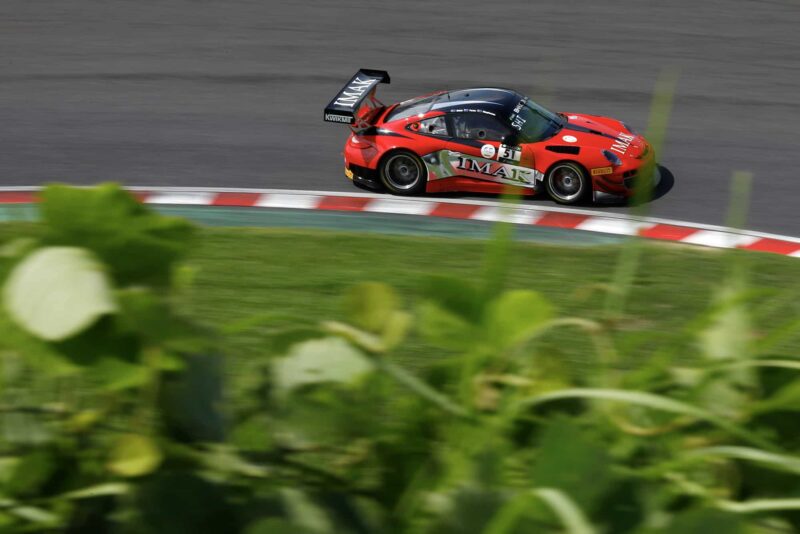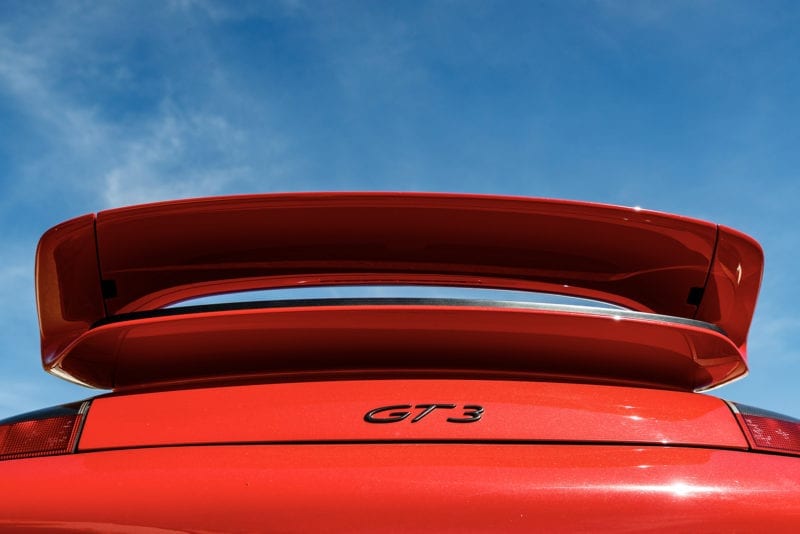The most sensible place to trace the Mezger engine back to is the 959, because that was the engine which used water cooling for its single piece, four valves per cylinder heads. It was related, but more distantly than some suppose, to the motor used in the 956/962 Group C cars, which was an earlier development and had effectively individual heads per cylinder.
It was the 959 engine that was developed for the GT1 version of the 911 (a mid-engined car that was barely a 911 at all) which in ultimate GT1-98 guise, would win Le Mans in 1998, some four years after Mezger had retired.
So when Porsche was looking for an engine to power a new breed of street-legal 911, to be called the GT3, the choice was between using the watercooled engine already in the 996 generation of 911, or adapting the Mezger race engine. And given what we know now, perhaps it’s not too surprising Porsche took the latter option.

The Mezger engine saw extensive service on the race track and road
Porsche
The Mezger engine would end up being used in every GT3, GT3 RS, GT2 and GT2 RS of both 996 and 997-era 911s (each of which had two specific generations), the last being the 500bhp 4-litre engine in the 997 GT3 RS 4.0 sold in 2011. And in the meantime it was also being used for racing versions of the 911 too, up to and including the RSR.
In addition to that, the Mezger engine was also used in Turbo versions of the 996 and first generation of 997, so if you want a guaranteed way of ensuring your 996 or 997 has none of the issues that afflict the others, buying a Turbo provides it.
What was so great about this engine? We loved its power, its torque delivery, its appetite for revs and fabulous sound. Porsche loved it for its strength. I once asked someone high up at Weissach why they were continuing with the Mezger engine when it meant Porsche had to build two entirely different flat six motors of near identical capacities. ‘We know everything there is to know about that engine, it’s a racing engine, it’s almost impossible to break. Why wouldn’t we use it? Which I guess tells you all you need to know about this engine and it’s genius creator too.




